The Independent's journalism is supported by our readers. When you purchase through links on our site, we may earn commission.
This spellbinding lost city in Colombia is centuries older than Machu Picchu and almost completely crowd-free
Thirty years after he scaled the wild Sierra Nevada mountains to reach Ciudad Perdida, Alex Robinson returns for a demanding three-day hike to discover if it remains a special place

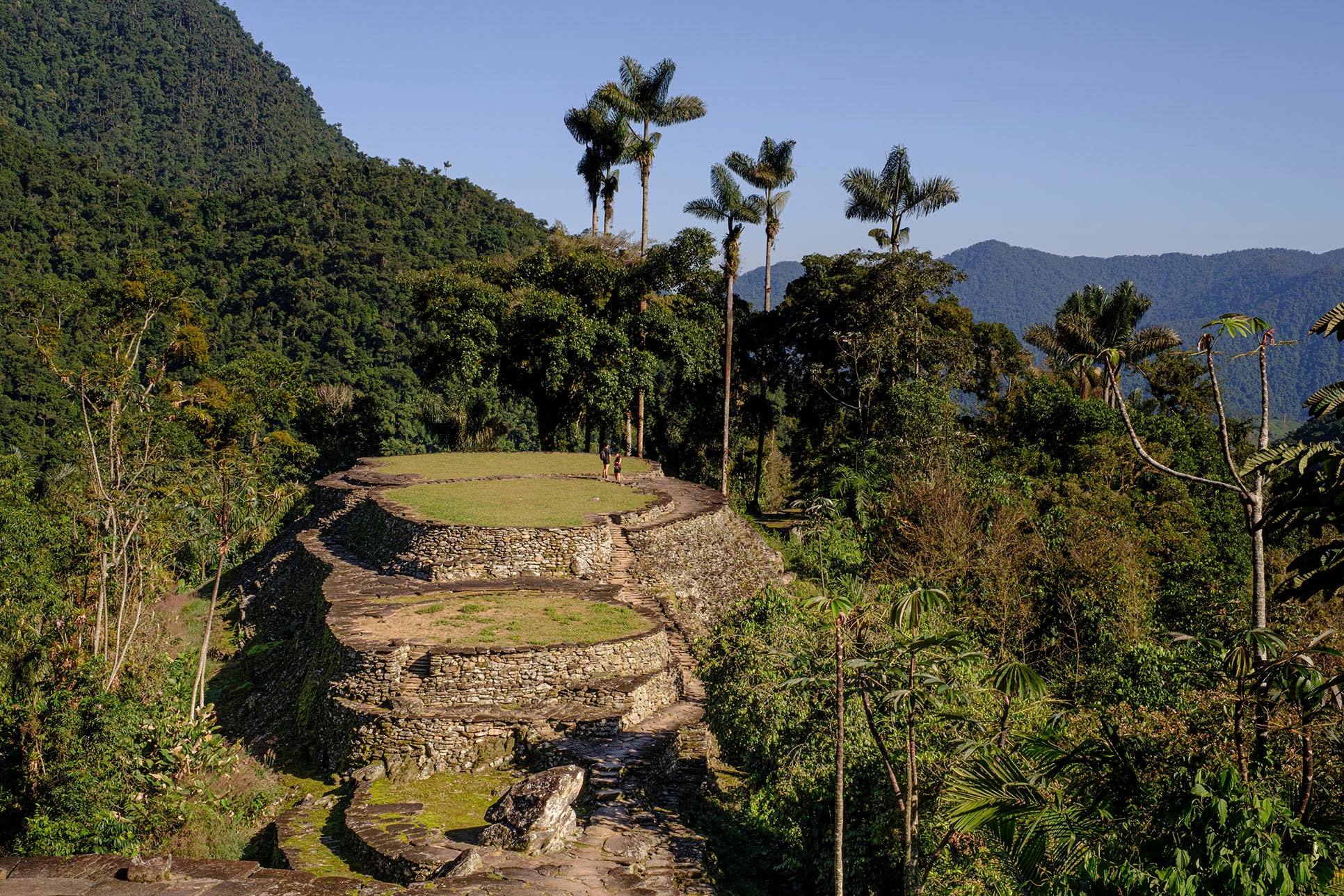
Three decades ago, the Lost City of the Tayrona people, a Machu Picchu-sized pre-Colombian archaeological site set on a high rainforest-swathed ridge in Colombia’s wild Sierra Nevada mountains, was pioneer country. It wasn’t even on South America’s “gringo trail”. I’d heard about the walk on a trip through the Colombian Caribbean and on a whim, hiked there. It was bliss. In five days we saw no other tourists.
We slept in tin-roofed lean-tos with valleys dropping at the feet of our hammocks. I remember the firefly dusks – when millions of gleaming green living lights flickered over the trees under a dome of cold stars. We waded through rushing streams, boots hung over our shoulders, and after three days reached a stair of a thousand mossy steps that rode up a ridge to the Lost City itself. Thunder crashed as we climbed. A shaft of lightning illuminated a vast stela scored with jagged petroglyphs at the Lost City’s entrance. It was a precious epiphany; a connection with the romantic and mystical, a moment to treasure in living memory. But not to repeat. Not now that the Lost City has been found by so many backpackers.
“So why was I repeating it?”, I cursed as I trudged up a steep slope under sweltering sun. The lonely Mamey trailhead I remembered from the 1990s was now a village with tie-dye shops and lattes. Diesel-coughing Land Cruisers ferried in hikers by the dozen. Plastic bags choked the concrete gutters. There were so many walkers that we left in half-hour staggers. And the path ahead of me was still packed. This was a mistake, I thought, a double mistake: among all the fit-looking twentysomethings I was old, paunchy and out of place. And would I even make it to the Lost City this time?
As the hill finally crested, I paused to catch my breath – and forgot my regrets for a while in the magnificent view. Fields rose from the deep valley below to a tangle of jungle, which clothed the steep valley sides before merging with steamy primary rainforest. The high Sierra Nevada extended beyond, in ripples of green to distant, looming crags. The Lost City was somewhere up there; three days walk away.
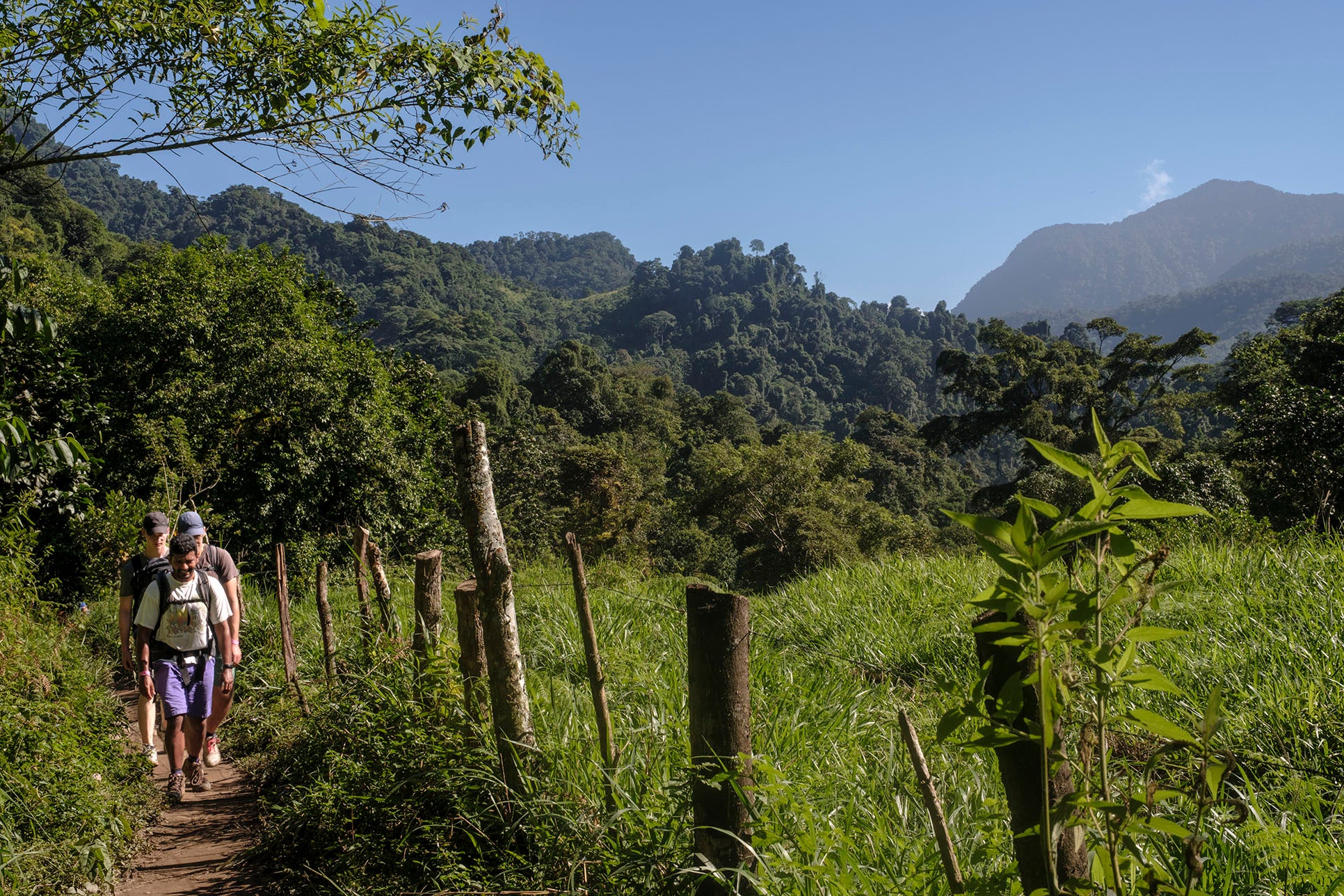
My reverie was broken by a brilliant yellow bananaquit, small as a wren which flitted past, seemed to glance at me and then to settle in a branch a few feet away, cocking its head and chirruping. “Bear-up”, it seemed to say. “The Sierra Nevada is still a special place.”
Yes, I reflected, it is, and not just for its natural beauty. Four Indigenous nations live in these wild forests, and a string of campesino smallholder villages farm the dales. When I visited last they were marginalised – caught in the crossfire of cocaine trafficking and counter-insurgency. Their future and that of the Sierra Nevada wilderness they had curated for millennia had looked bleak. Then, at the turn of the millennium, there was an extraordinary turnaround. Thanks to a rare combination of indefatigable Indigenous campaigning and political will, traffickers and paramilitaries were gone and the Sierra was now governed in genuine partnership with the local Indigenous people and campesinos. There was more wilderness now than in the 1990s. Last year, Unesco declared the Sierra Nevada “a source of inspiration and a good practice”, paving the way for the region to become a new World Heritage site. Those backpackers crowding the path ahead were bringing money directly to Indigenous and campesino people. All of the Sierra’s hiking agencies are run by them. Tourism has replaced narco-trafficking.
Read more on hiking and trekking:
At the end of the day, as I eased my sore feet out of my jungle boots, I was feeling more positive. I was glad there was no lean-to to sleep in that night, or hammocks. My group of 12 hikers all shared a big shed-like encampment that sprawled along a rapid river. It smelt of sweat and feet, but there were real beds. And mosquito nets. And while the building was ungainly, the setting was still beautiful. Across the clear-water river, morpho butterflies floated out of the forest. A cooling breeze as fresh as forest moss wafted from the water. Free from phones and with a jug of fresh passion fruit juice and dinner on its way, our hiking group was beginning to bond. As the sun set over the steep mountains and the forest shaded from green into indigo, we shared moments from the trail, blister plasters and pricey cans of beer lugged up by mule. When our bodies sagged, none of us aware of the actual time, we retired to the honeycomb of cubicle beds.
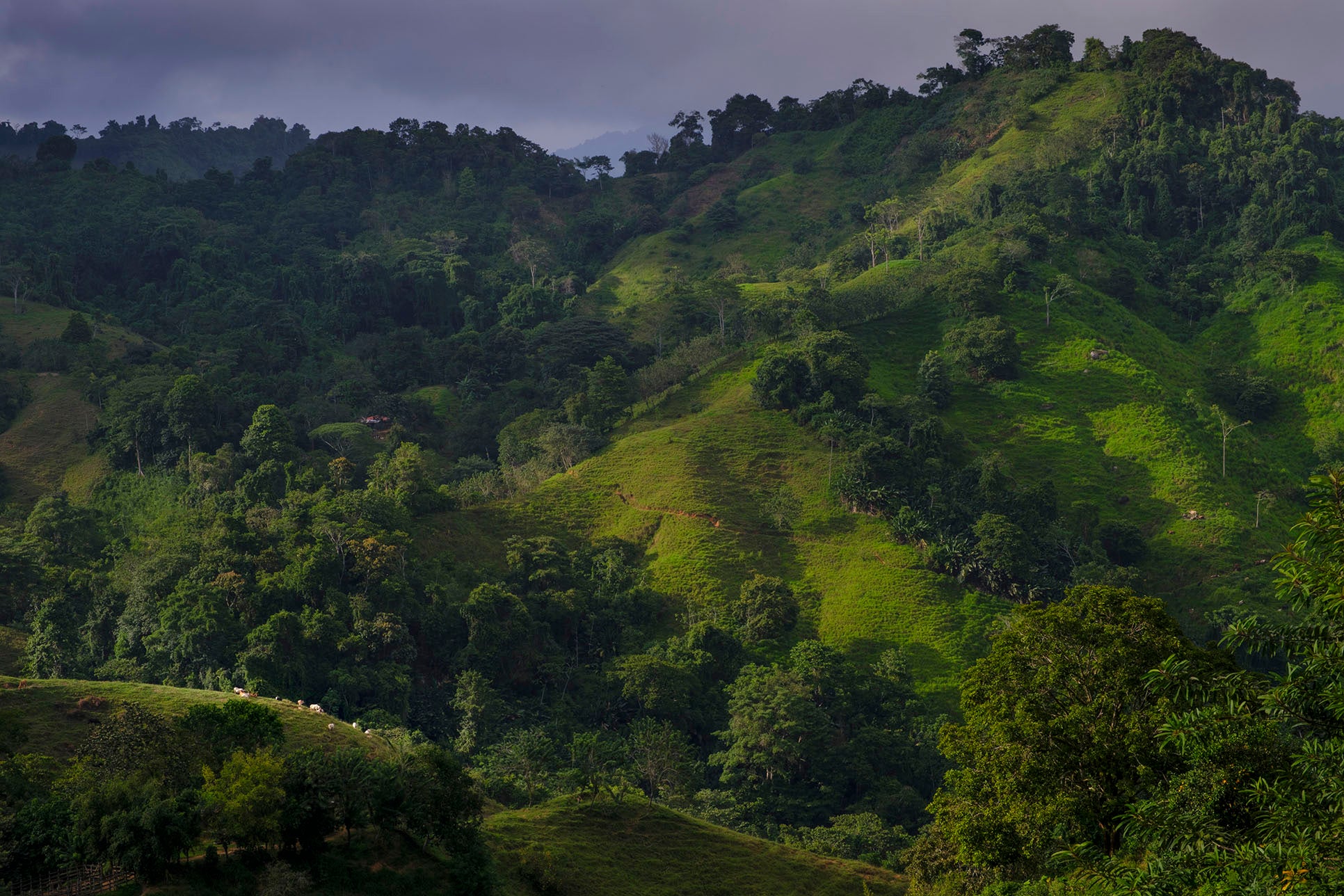
The next day we were up before the sun and off while the morning was cool. Mist wisped off the forest. A hummingbird whirred past and, slowly, I eased my aching muscles into the rhythm of the trail. I was surprised how good I felt. Maybe it was the clean air, heavy with the aroma of forest and river, oxygen-rich. Maybe it was the sight of a group of walkers at least a decade older than me. It would be an eight-hour tramp today. Soon the path climbed, winding muddily through dense trees. I heaved myself over boulders and squelched through patches of sticky mud.
Then we dropped as steeply as we’d climbed, through forest into fields. They were tended by Indigenous Kogui people. I was amazed by how many more there were than 30 years ago; and how many children. We forded a small stream and passed into a village of round, thatch-roofed huts. After a break for an early lunch, we climbed again. And now I was feeling it – my legs searing with lactic acid, my lungs gulping in air. Then, finally, as the light was warming into low yellow, a long, gradual slope took us into the second camp.
I was sweltering and dripping with sweat. A Kogui guide pointed down the path beyond the refectory building to the Buritaca River. I plunged into a deep, clear, fish-filled pool. I lay on my back and watched iridescent red dragonflies playing. High above, the delta wings of an eagle spread to rise on the mountain thermals.
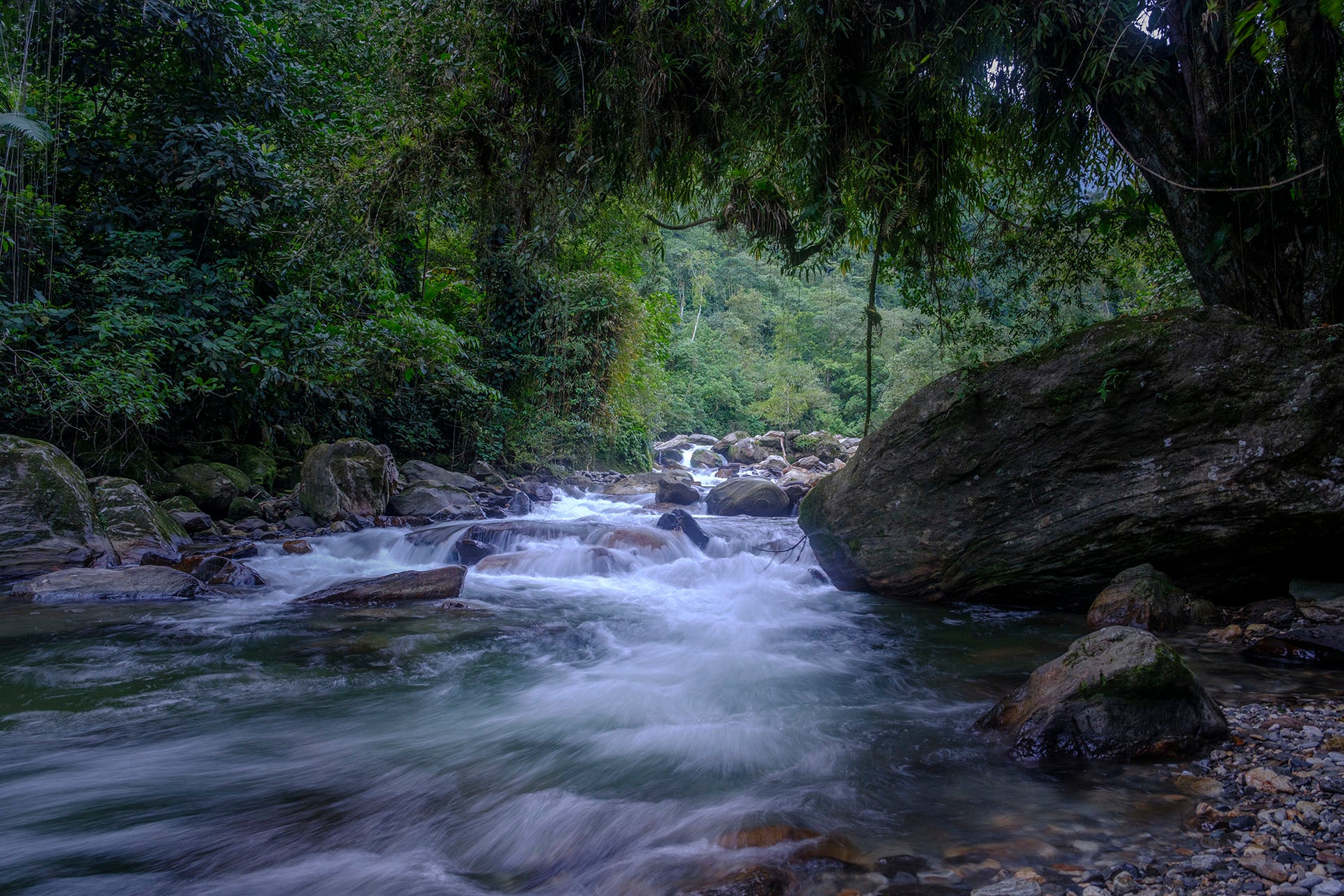
That night, over hot chocolate, we shared inspiration. I was curious to find out what had brought my fellow hikers to the Sierra.
“I wanted to be in nature without any interruptions,” said Janneke, who was smiling broadly, despite her blisters and mosquito bites. “To find my bodily strength again as well as my strength inside, somehow being here feels like a return to my centre.”
“I feel so much more connected with the energy of the mountains,” said Janosch, a young student from Switzerland, biting into a juicy forest-grown pineapple and gazing over the river to the ridges of forest and jagged peaks that soared above them.
“Having no access to my phone is actually a real blessing. It’s so much easier to bond with nature. And this fruit is almost as amazing as the view.”
Later that night, our guide Marron made a small fire next to the river, placing a row of shiny seashells over the flames. As he did so he told us about the Lost City itself, in preparation he said for our arrival the next day. It’s real name is Teyuna – a name given by a civilisation half a millennium older than the Incas, who must have chosen to build their city only for beauty’s sake. Carving concentric terraces on a knife-sharp ridge must have been impossibly difficult, but the setting, said Marron, just wait until you see the setting.
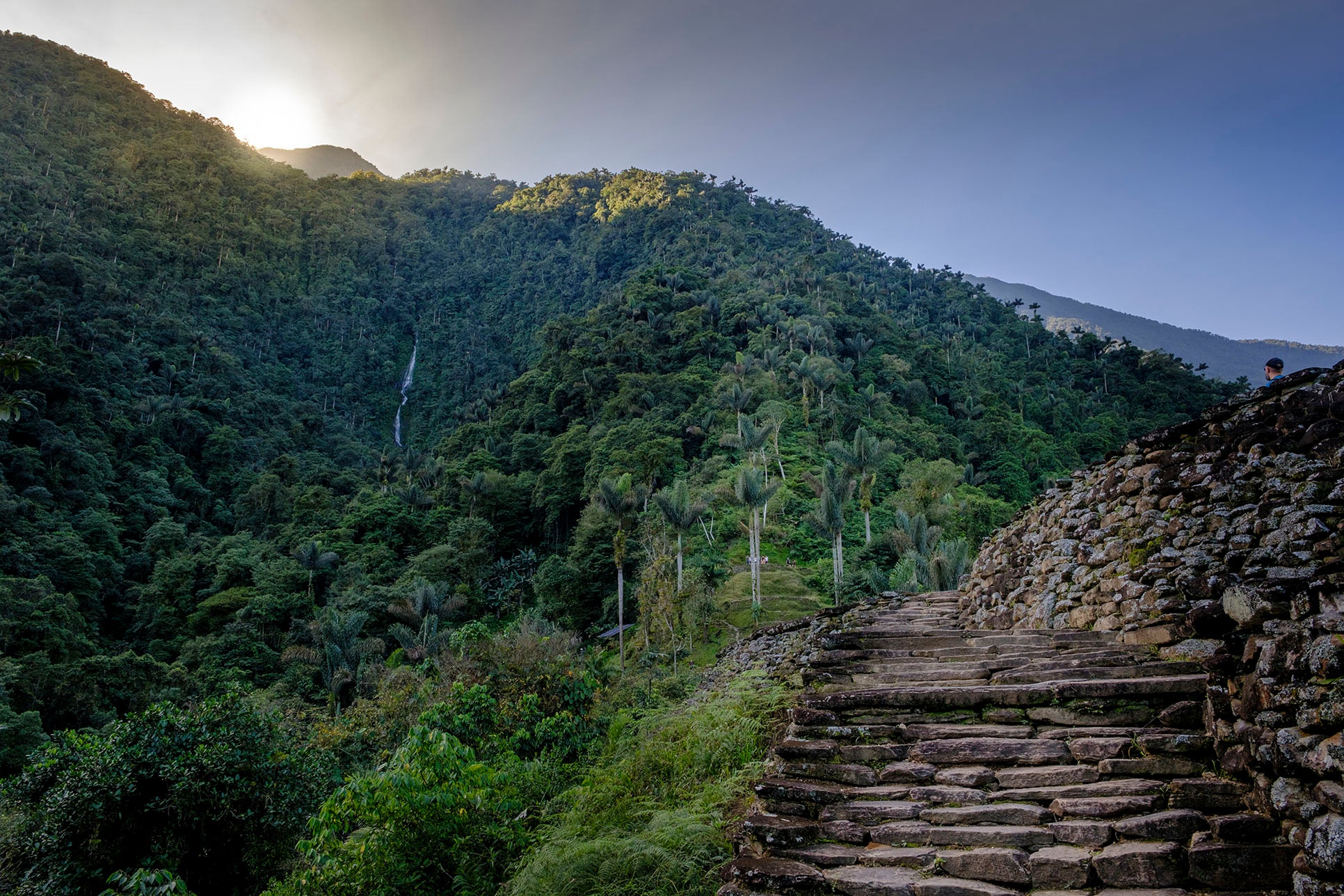
Some 8,000 people lived at Teyuna. Tayrona cities once stretched all the way down to the Caribbean coast, some 19 miles away. But the Tayrona were forced out by the Spanish who stole their gold and enslaved the Tayrona women. The Lost City was abandoned and the Tayrona retreated into the high mountains.
“But the Lost City was never lost,” said Marron pulling the seashells from the flames and plunging them sizzling into a pot filled with a little water which he left to evaporate over the fire. “It was looters who called it the Lost City when they chanced upon the ruins in the mountains in the 1970s. But the Tayrona have been visiting it for centuries.”
“How can that be?” I asked.
“The Tayrona are still here”, said Marron, “they are the Kogui, the Arhuaco, Wiwa and Kankuamo; the only Indigenous tribes in the Americas whose culture survived unscathed.”
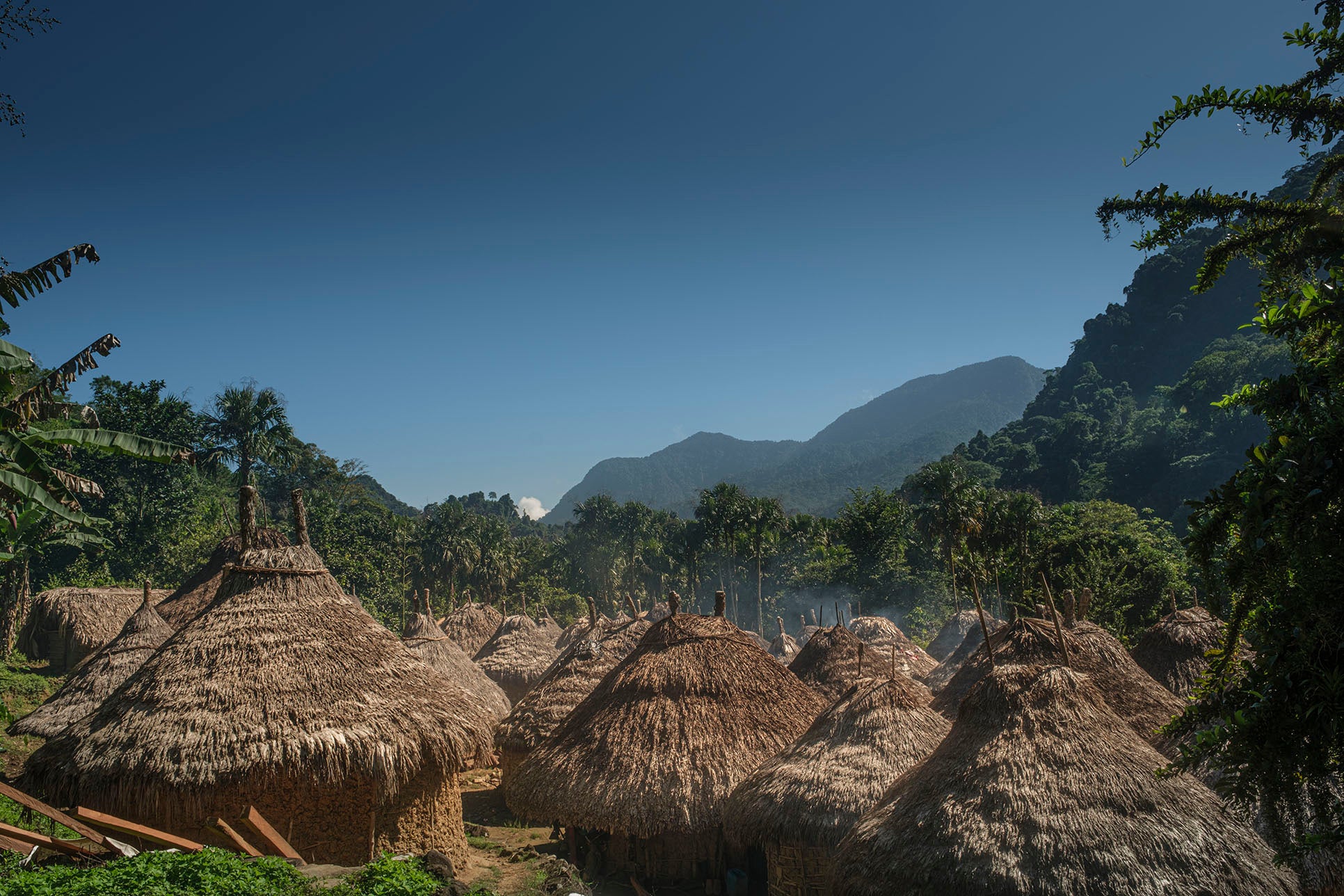
He opened the pot with the shells inside. They had turned to a chalky powder. Quick lime.
“The Tayrona regard these mountains as the heart of the world – a microcosm of the planet. Think about it – the Sierra contains almost all the climates on the planet – from the tropical coral-fringed Atlantic, through rainforests, cloud forests, high alpine moors and even snowfields and glaciers.”
The Kogui, he explained, think of the Earth as a living being. They call her Aluna. They regard themselves as “older brothers”, tasked with keeping the heart of the world pumping. They protect the Sierra’s forest and its creatures as part of the body of Aluna. Seeds are blessed before planting, every aspect of life has symbolic significance in the life of Aluna. In the late 1980s, the Kogui warned that the destruction of forests by us – the “younger brothers” – and our exploitation of nature was causing the world to heat up. They predicted global warming before Western science had even coined the term.
Marron sprinkled some of the white powder into a gourd: “This lime – made traditionally just as I have shown you in a poporo – like this. It is a sacred object. Like a womb. They take lime from the poporo and chew it with coca leaves; then they meditate and are attuned to Aluna.”
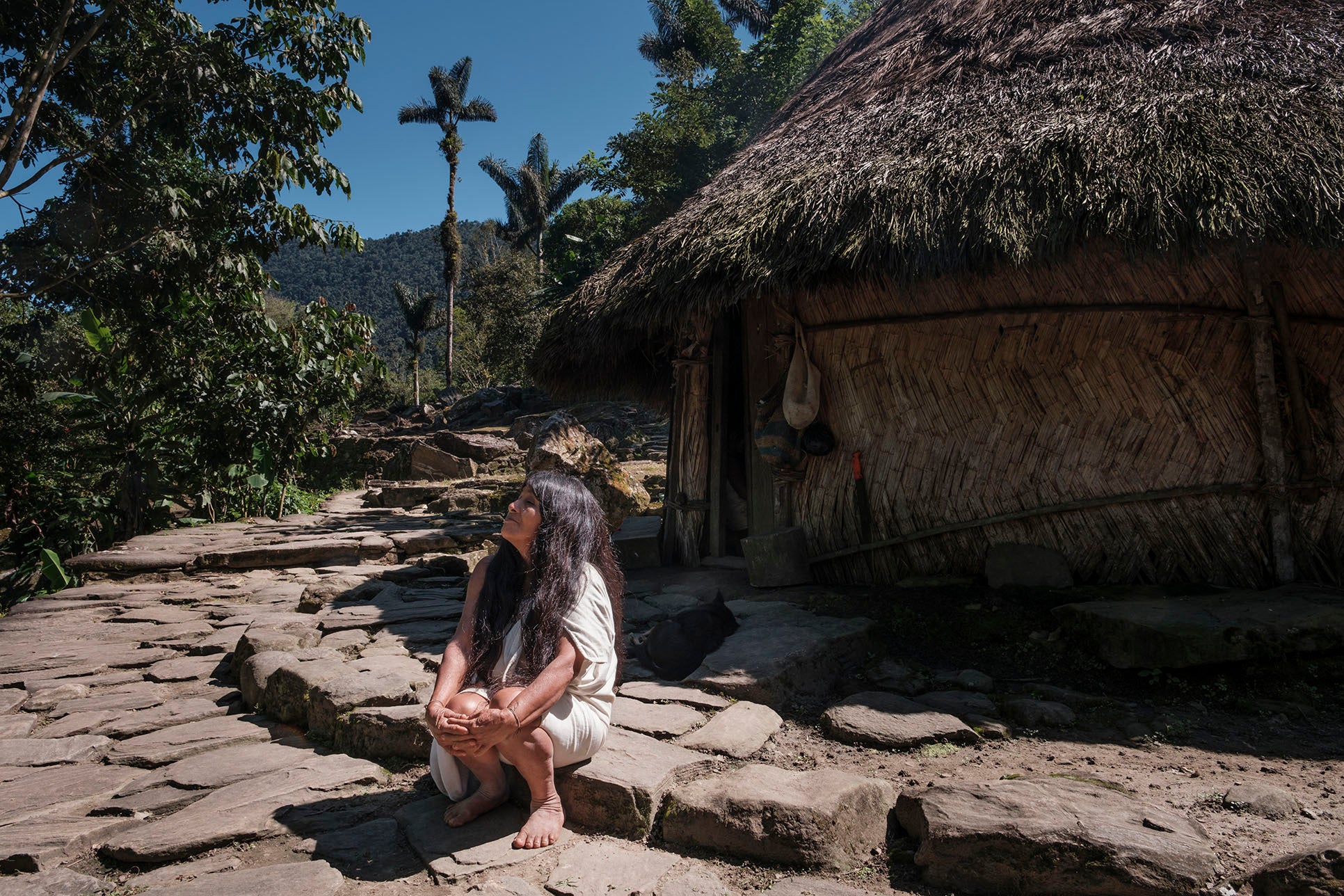
The next morning we were up with the stars and on our way to the Lost City. I was feeling energised. The path hugged the steep ridge side and followed the plunging Buritaca. The path veered sharply to the left, meeting a rickety cable bridge that spanned a swirling set of rapids. Then, after an hour or so, we reached the steps I so vividly remembered from my last visit. This time they were dappled with soft dawn sunlight.
For half an hour we climbed, and then reached the terraces and the huge stela that I had seen illuminated in a shaft of lightning. There were Kogui all around the ruins. I asked one of them, in faltering Spanish, what the petroglyphs on the stela meant.
“It is a map,” he said, “showing the energetic connections between here, the other cities in the mountains and the important sacred sites.”
As the morning warmed, I sat on a high point above the Lost City. It was as Marron had stated, the perfect place to build a city if you cared about the beauty of nature. I found myself lost in the view, drifting into a meditative state, losing all track of time.
I didn’t notice Amar, one of my hiking group, when he sat beside me. But he too was lost in the epiphany of the view, and of the breath of the breeze, the sunlight glow on our skin, the integration with that astonishing landscape and the three-day pilgrim path that had brought us here.
“I have such a sense of connectivity,” he whispered quietly. “To nature, to human beings, to sacred tradition.”
He hoped, he said, that he could carry this feeling from the “heart of the world” into the business of daily life.
I looked around. All of our group were spellbound. Lost in silent contemplation. Somehow the Lost City was working its magic on all of them. Just as it was on me, and as it had done 30 years ago.
How to do it
The Earth Trip offers 14-day sustainable trips to Colombia, including the Caribbean coast, with the hike to the Lost City from £3,750 per person B&B, plus flights. Magic Tour offers hikes to the Lost City. Alex Robinson stayed in the Playa Koralia hotel on the beach before and after the hike.
Read more on South America travel:
Join our commenting forum
Join thought-provoking conversations, follow other Independent readers and see their replies
Comments